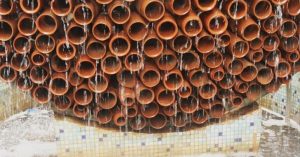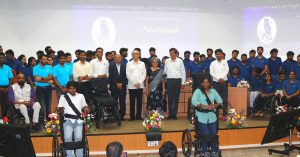Startup Makes Nanocarbon For Batteries From Coconut Shells, Boosts Efficiency by 125%
Jaipur-based startup Cancrie, co-founded by Akshay Jain and Mahi Singh, is making nanocarbon for batteries from coconut shells. The couple shares how their patented technology is building better energy storage solutions for a sustainable world.
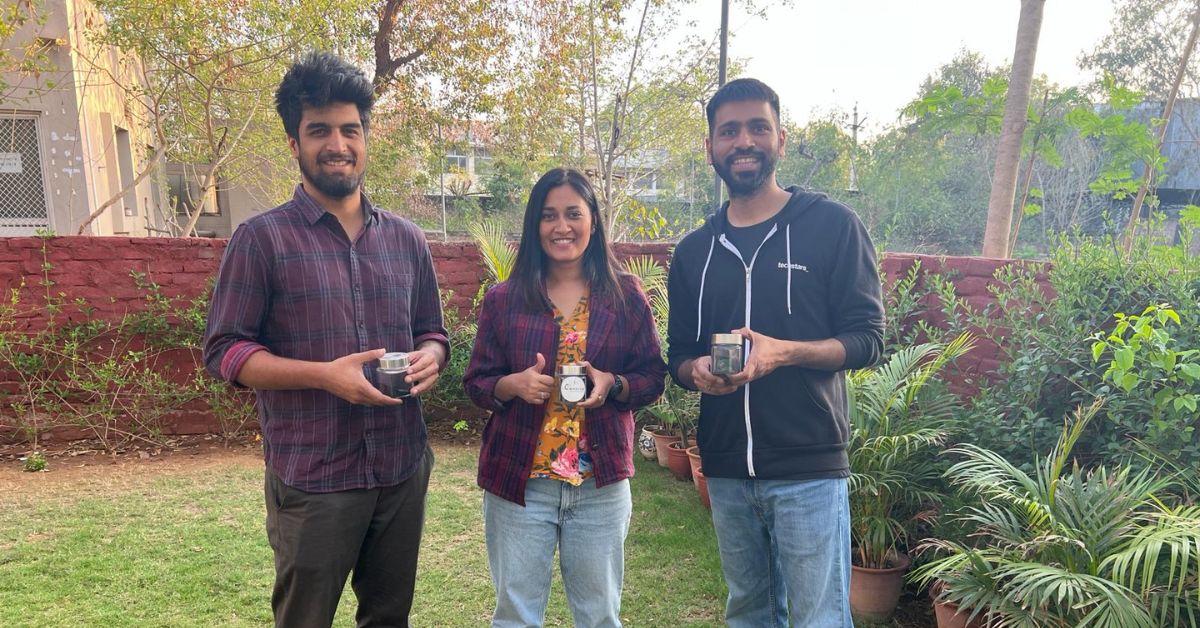
With rising fuel prices and the promise to deliver a green alternative to traditional combustion engines, the electronic vehicles (EV) market has already exploded in India in recent years. However, the notion of sustainability on account of the environmental impact of manufacturing batteries and the energy source to power these batteries is still doubtful.
“As EVs and Renewable energy sources become more common, there’s a growing demand for energy storage. This means more batteries are needed, which leads to increased mining for materials. This puts further strain on the planet as we extract more resources for battery production,” Akshay Jain, co-founder of Cancrie, tells The Better India.
To find an optimum solution, Akshay (36) along with his co-founder Mahi Singh (35) innovated nanocarbon for batteries from coconut shells. The patented technology is claimed to increase battery performance by 125 percent, thus reducing the need for raw material extraction for battery production.
“We are using waste to make nanocarbons, and by adding it as a component into the existing batteries, we are increasing their efficiencies. This reduces the need for mining of rare earth metals and makes the planet more sustainable,” he adds.
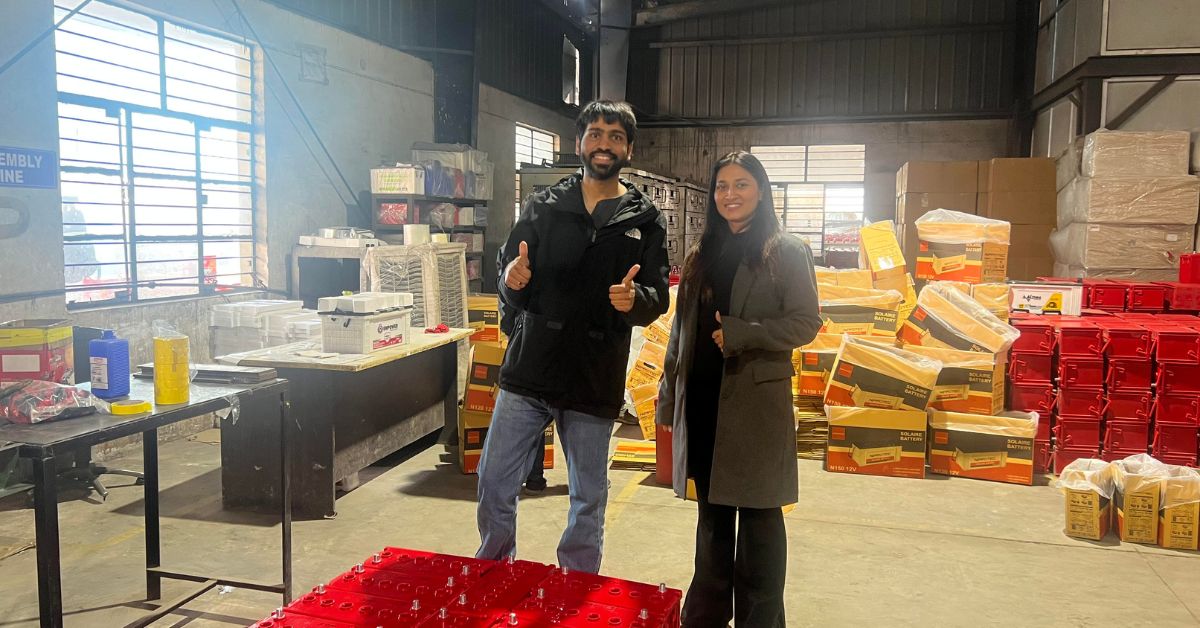
Extracting useful carbon from agri-waste
Akshay and Mahi grew up together studying in the same school in Jaipur. In 2010, Akshay went on to pursue PhD in chemical engineering at the National University of Singapore. Two years later, Mahi also went to Singapore to pursue her master’s at Nanyang Technological University.
It was during the same time that they started brainstorming about this technology.
“During this period, we tried to upcycle agricultural waste into fertilisers, low-cost fuels, and absorbents. After a year and a half of research, we achieved a major breakthrough by turning agri-waste into high-value nanocarbon for use in batteries. That marked a turning point for our project,” says Akshay.
Mahi points out that “more people are adopting EVs, alongside a growing interest in adopting renewable solar energy, both of which rely on batteries. By speaking to various people, we understood that existing batteries, which are made with carbons derived from fossil fuels, face challenges related to lifespan, charging, warranty returns, and safety. We saw this as a huge plug-in for our innovation.”
Akshay and Mahi decided to marry both concerns of growing agricultural waste and rising demand for batteries, and kill two birds with the same stone! In 2020, Akshay and Mahi launched their startup ‘Cancrie’ to commercialise their patented innovation.

Initially, they used 15 different varieties of waste — including coconut shells, coconut husks, fruit stones, paper waste, palm kernel shells, and human hair waste — to upcycle them into useful nanocarbons.
“But from a business perspective, we found coconut shells as the right precursor because of their commercial feasibility and their wide availability and abundance. These precursors possess certain properties like high carbon content, hardness levels, and ash content, which makes it a better choice,” says Akshay.
After the thermal treatment of agricultural waste, the startup extracts black-coloured powder, known as nanocarbon. Compared to existing incumbent solutions used in batteries, it is claimed to have a better surface area, pore network, surface wettability, and functionalities — this enhances the electrochemical reactions on electrode plates at a molecular level in batteries.
Enhancing battery efficiency and lifespan
After safely conducting the BIS standard testing for batteries using their nanocarbon at an industrial scale, the startup commercialised their product to leading battery manufacturers in the country. Mahi informs that at least 3,500 batteries with Cancrie nanocarbon have made it to the domestic market in Delhi, and Navi Mumbai and Pune in Maharashtra.
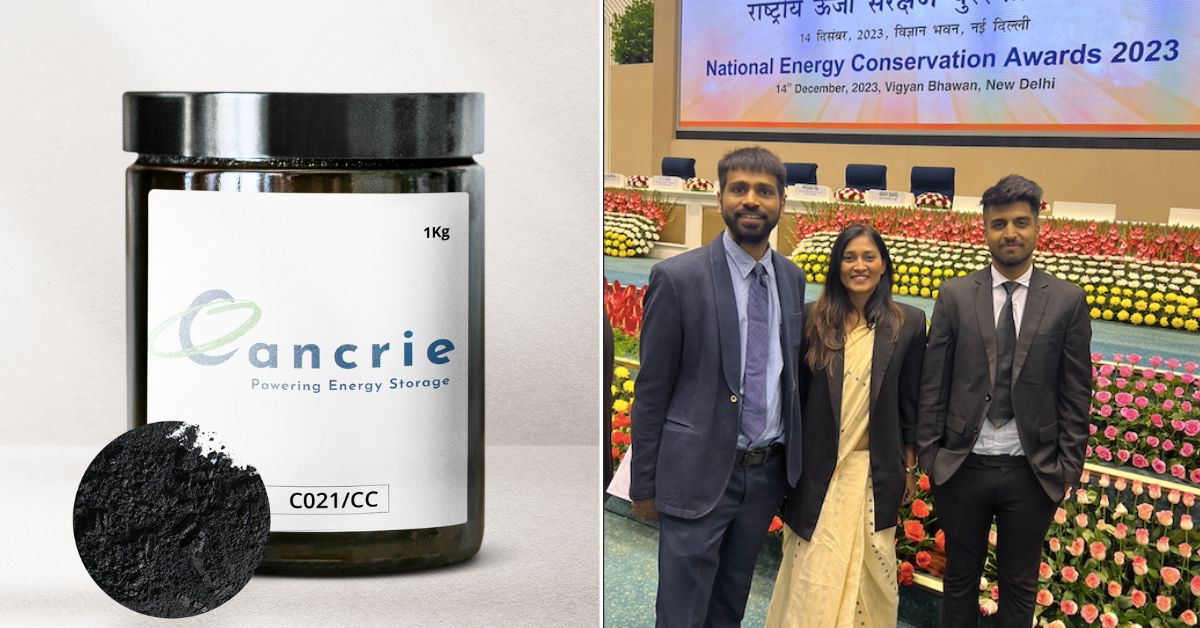
Interestingly, these nanocarbons have proved to increase energy density for lithium-ion hybrid batteries by 125 percent. Explaining in simple words, Akshay says, “With this, any two-wheeler user can run the same vehicle for 225 kilometres instead of 100 kilometres because the range has gone up. If somebody is driving their two-wheelers at the speed of 40 to 50 kilometres per hour, with ours, they can run it at a much better speed of 60 to 70 kilometres per hour.”
“We have other advantages for the lead acid batteries like household investors where our nanocarbon has proved to improve the life cycle of the battery. When such batteries are charged, a significant amount of electricity is lost in heat dissipation. Our material causes lesser internal resistance thereby storing a majority of the energy in the form of chemical energy. This translates into faster charging and improving the life cycle of batteries that use our nanocarbon,” he adds.
Cancrie has observed higher capacity retention thereby showcasing higher life that can go up to 50 percent, thereby minimising the losses due to warranty returns.

Kiran Chinchane, owner of Mumbai-based Laurus Batteries, has been using nanocarbon in the manufacturing of their lead-acid batteries for the past year and a half. He tells The Better India, “After incorporating their nanocarbon into our lead-acid batteries, we have successfully extended the lifecycle of our batteries by 20 to 25 percent. Laboratory tests indicate a reduction in warranty returns as well. Currently, we have replaced 20 percent of our batteries with their nanocarbon component, and I aim to integrate it into all our batteries in the future.”
Meanwhile, Amitej, head of product development at Cancrie, tells The Better India, “As the performance and the life cycle of the batteries have gone up, you don’t need to manufacture more batteries than what was needed to meet the rising energy requirements. This will also cause lower CO2 and GHG (greenhouse gas) emissions. By 2050, we would be annually reducing four Giga tonnes of CO2 emissions by simply switching the material.”
In 2023, Cancrie was also awarded the National Energy Efficiency Innovation award by the Bureau of Energy Efficiency, Ministry of Power. If you found our stories insightful, informative, or even just enjoyable, we invite you to consider making a voluntary payment to support the work we do at The Better India. Your contribution helps us continue producing quality content that educates, inspires, and drives positive change. Choose one of the payment options below for your contribution- By paying for the stories you value, you directly contribute to sustaining our efforts focused on making a difference in the world. Together, let’s ensure that impactful stories continue to be told and shared, enriching lives and communities alike. Thank you for your support. Here are some frequently asked questions you might find helpful to know why you are contributing?

Personally, this journey has been extremely fulfilling, shares Akshay. “When I started this work, I was not sure how it would turn out. It requires a lot of patience as it takes years to reap the fruits. We have built nanocarbon from scratch and above all, from waste. It took us almost 10 to 12 years before we started selling. It gives me immense contentment that we have brought this product to such a level,” he adds.
(Edited by Pranita Bhat; All photos: Mahi Singh)
This story made me
-
97
-
121
-
89
-
167




